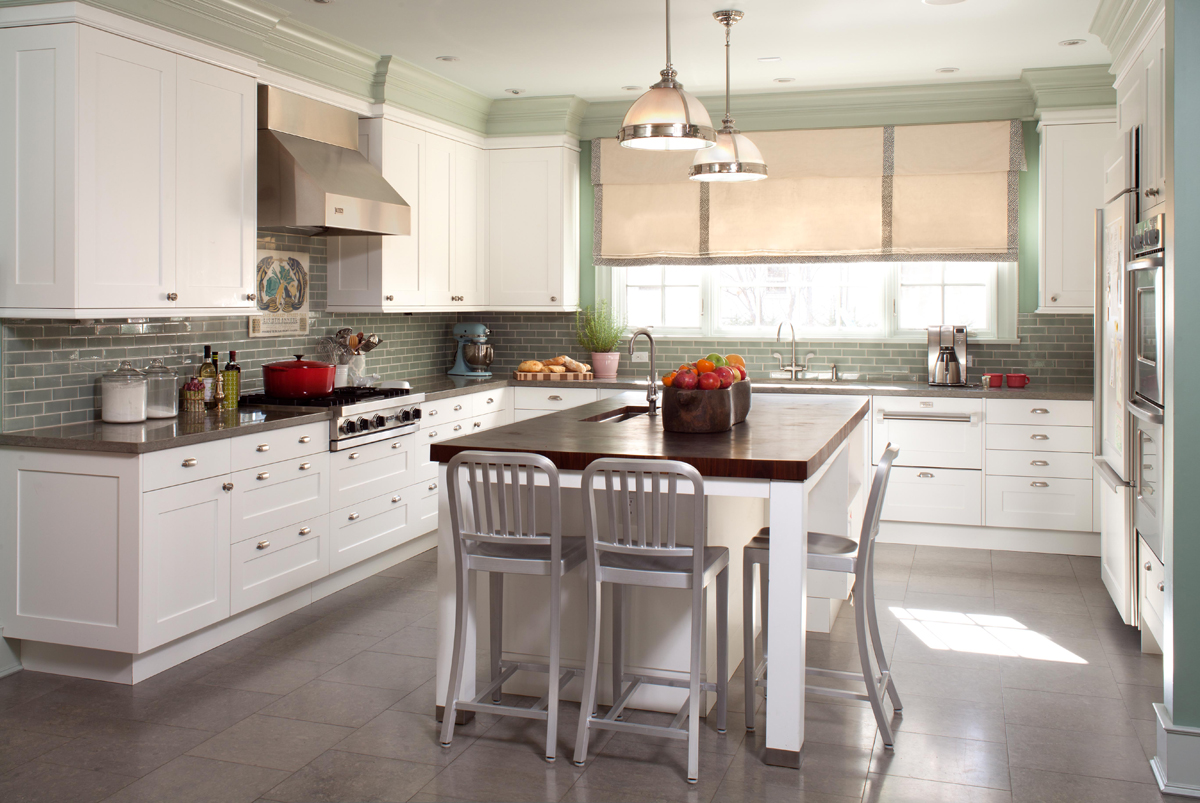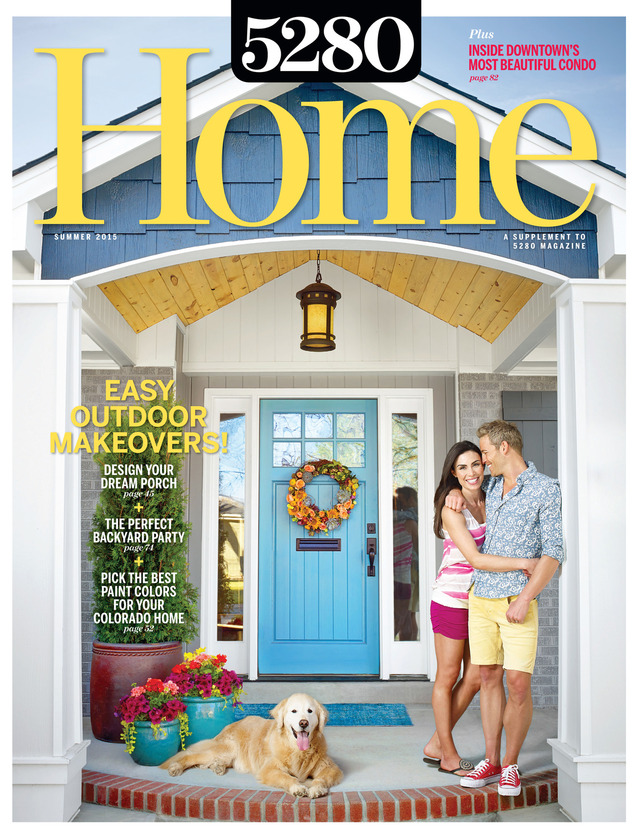The Local newsletter is your free, daily guide to life in Colorado. For locals, by locals.
From intimate soirees to get-togethers so big she needs to set up an extra table in the spacious foyer off her kitchen, Ramey Caulkins knows how to throw a party. So it’s no surprise the interior designer, owner of Denver-based Griffin Design Source, made her kitchen the largest room in her house. “No matter what, everyone always ends up in the kitchen,” she says. “I wanted there to be plenty of space for everyone. A family dinner, a small gathering, or a large party—this kitchen can accommodate it all.”
The space, though, is more than a chic gathering place for guests. Caulkins also designed it to be as utilitarian as possible. “A great design is achieved when there is a mix of both decorative and functional items coexisting,” she says. “First, you have to identify that you live casually, or formally, or entertain often, or cook a lot, or eat with a large family. Defining how you live in your space is really important, especially in the kitchen.” Here, Caulkins shares the tips and tricks that make her kitchen work.
Sensible Splurges
Overhauling a kitchen can be pricey, but not every item you install has to be expensive. The butcher-block island is a perfect example: The end-grain walnut countertop was a high-end choice, but the Kohler faucet is a basic, inexpensive model that lets the walnut stand out. “I’m not sure a fancy faucet would add anything,” Caulkins says. “In fact, it might even detract.”
Vertical Thinking
Consider the areas above and below your cabinetry, Caulkins advises. “Rather than leave that odd, vacant space that’s perfect for collecting dust and spiderwebs, have your cabinets go all the way to the ceiling,” she says. “We did this by building out the crown molding to meet the tops of the cabinets. The molding becomes the architectural element that ‘finishes’ the cabinets rather than letting them just hang about.” A backsplash (like these two-by-six-inch tiles from Ann Sacks) unifies the wall.
Paint Tricks
If you want to paint your walls and trim different colors but aren’t sure what works—or if your factory-white cabinets don’t match your white-painted trim—save the hassle and expense of custom paint colors and try the following: Pick one shade you love for the walls (Caulkins chose Green Blue by Farrow & Ball because it reminds her of the ocean), then cut that color with white paint by 50 to 75 percent to create a lighter shade for the trim, like Caulkins’ combo here.
Standard Deviation
Integrating a surprising element can freshen up a space. Caulkins added two linen slipcovered chairs to a traditional McGuire dining set (cushions by Perennials Fabrics) for a bold twist on a classic scheme. “I love the fabric,” Caulkins says. “It’s so fun to have an unexpected moment.”
Drawer Love
“I find that one cannot have enough drawer space,” Caulkins says. “With a drawer—unlike a cabinet—you have a better chance of not pushing things to the back and forgetting about them. I love deep drawers for pots and pans, as well as mixing bowls and extra dish storage.”
Innovative Ideas
Build in a few special items—such as Caulkins’ narrow, secondary trough sink (Undertone by Kohler)—that align with the way you live. “We use this sink more for entertaining than for food prep,” Caulkins says. “It’s the greatest sink for serving oysters or other cold shellfish atop ice, and I love to keep the fixings for Bloody Marys and mimosas cold right inside.”
Counter Revolution
Rethinking Limestone
Limestone tends to be passed over for kitchen material: “Categorically, limestone has a terrible reputation compared to marble or granite,” Caulkins says. But she chose French Blue limestone (about $59 per square foot from Ann Sacks Collection) for both the floors and the countertops in her kitchen. Why? She has three good reasons:
Forgiveness. Many limestone materials are denser than most marbles, so stains can be removed relatively easily. Compared to hardwood floors, limestone handles water leaks from appliances effortlessly. “It’s so easy with pets and kids,” Caulkins says.
Character. Limestone gets worn in over time like the “supple leather of a bomber jacket,” Caulkins says. It takes on a gorgeous patina that gives even the
airiest of kitchens a cozy, livable feel.
Longevity. “It has the strength and durability to last for centuries,” Caulkins says. “You’ll never tire of it, and it’ll never stop working
for you.”












